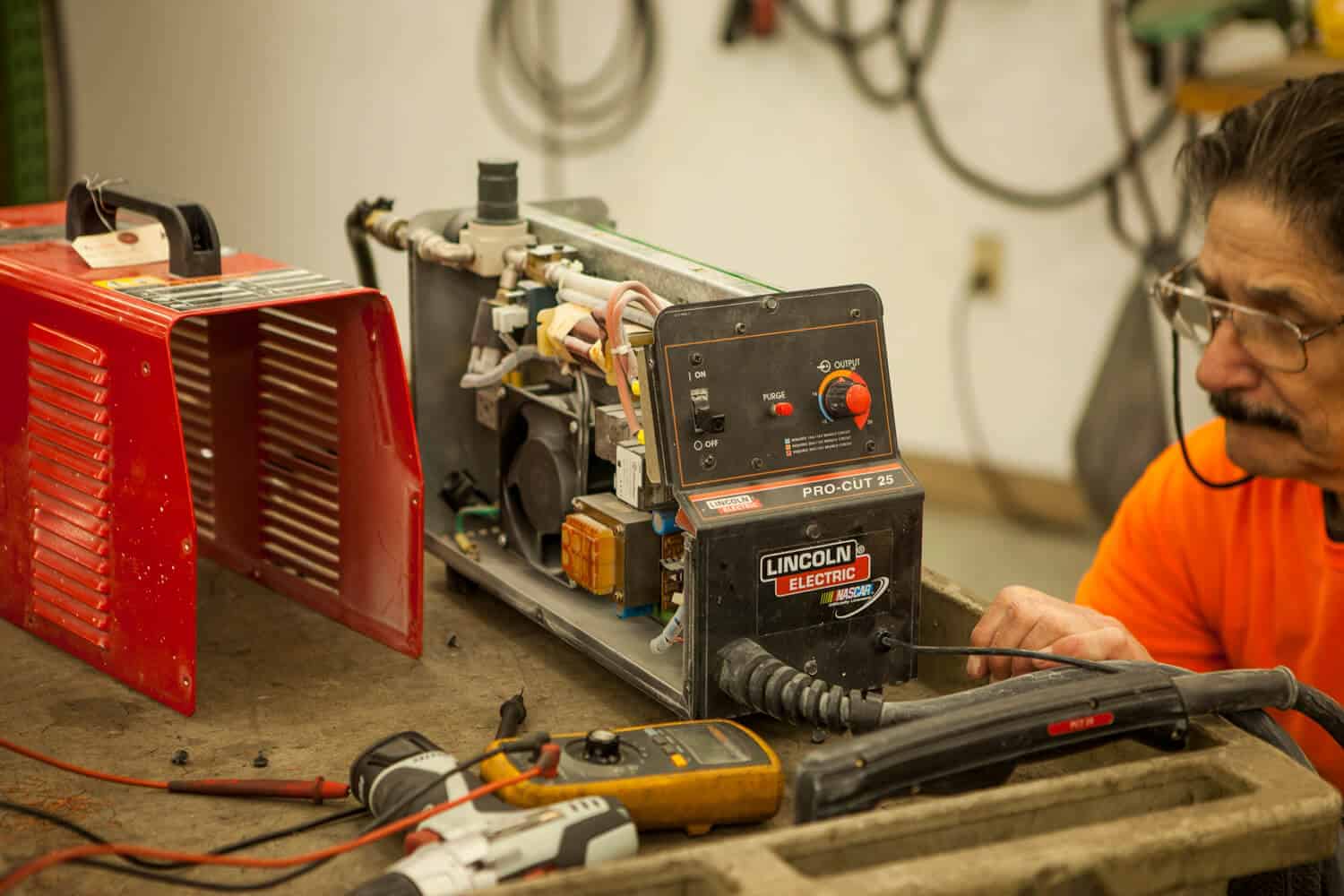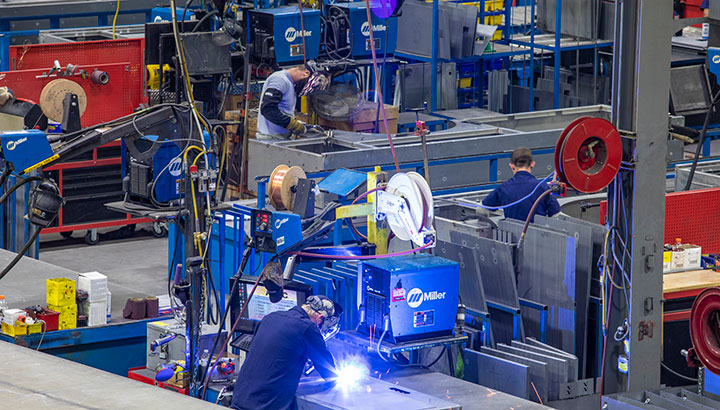Common Welding Repair Work Issues and How to Address Them Properly
Welding repair services typically run into a series of concerns that can threaten the stability of the final item. Usual issues include poor infiltration, porosity, and imbalance, amongst others. Each flaw provides unique challenges that call for certain strategies for resolution. Understanding these issues is necessary for welders intending to improve their results and skills. This conversation will certainly discover these common welding repair service concerns and efficient techniques to address them.
Poor Infiltration
Poor infiltration takes place when the weld metal falls short to completely fuse with the base material, causing weak joints and possible structural failings. This problem often originates from insufficient heat input, incorrect electrode angle, or improper welding rate. Welders might encounter poor penetration as a result of a miscalculation of the required parameters for a details product thickness or kind. Furthermore, contamination on the base product's surface area can hinder effective bonding, exacerbating the trouble. To resolve poor infiltration, welders need to assure proper settings on their devices and maintain a clean work surface area. Routine evaluation of welds is advised to identify any shortages early, enabling for prompt adjustments and the avoidance of jeopardized architectural honesty in welded assemblies.
Porosity
Porosity is a common defect in welded joints that manifests as small gas bubbles caught within the weld steel. This problem can endanger the honesty of the weld, causing decreased stamina and prospective failing under stress. Montana Mobile Welding and Repair Fabrication. Porosity typically occurs from contamination, moisture, or improper welding strategies, which permit gases to run away into the liquified weld swimming pool. To attend to porosity, welders need to assure correct surface area prep work, keep a tidy functioning environment, and use appropriate welding criteria. Additionally, choosing the ideal filler product and securing gas can reduce gas entrapment. Normal evaluation and testing of welds can help identify porosity early, assuring prompt rehabilitative activities are taken, consequently preserving the quality and dependability of the bonded structure
Imbalance
Misalignment in welding can develop from numerous variables, consisting of inappropriate arrangement and thermal development. Recognizing the source is necessary for efficient resolution. A number of modification techniques are offered to straighten elements and guarantee structural honesty.
Sources of Misalignment
Welding imbalance typically stems from a selection of underlying problems that can compromise structural stability. One key reason is inappropriate fit-up of parts before welding, which can result in gaps and irregular surface areas. Variations in thermal expansion throughout the welding procedure can also cause distortion, particularly if the products being signed up with have different coefficients of development. In addition, poor securing and fixturing may fail to hold parts securely in location, bring about activity during welding. Inadequately kept tools, including welding machines and devices, may introduce variances in the weld bead, more adding to misalignment. Lastly, driver mistake, coming from not enough training or experience, can likewise play a significant duty in creating misaligned welds.
Improvement Techniques Available
Dealing with misalignment properly requires a mix of corrective methods customized to the specific issues at hand. One common technique is the use of components or jigs to hold elements in the proper setting throughout welding, making sure regular positioning. In addition, preheating the materials can help in reducing distortion and boost fit-up. For substantial imbalance, mechanical realignment strategies, such as utilizing hydraulic jacks or clamps, can be used to deal with the position before welding. Post-weld heat treatment may additionally be required to ease stresses triggered by imbalance. Finally, cautious inspection and change throughout the configuration phase can prevent imbalance concerns from ending up being substantial issues, advertising a smoother welding procedure and improving total architectural integrity.
Distortion
Distortion is a typical difficulty in welding that can emerge from numerous factors, including irregular heating and air conditioning. Understanding the sources of distortion is important for applying reliable prevention methods. Resolving this concern not just boosts structural stability but also boosts the general quality of the weld.
Sources of Distortion
When based on the extreme warm of welding, materials usually undertake changes that can lead to distortion. This sensation mainly arises from thermal growth and contraction throughout the welding procedure. As the weld location warms up, the material increases; upon cooling, it acquires, which can develop interior stresses. In addition, uneven home heating across a workpiece can intensify these stresses, leading to warping or bending. The sort of material check this additionally plays a significant function; steels with varying thermal conductivity and coefficients of growth might react differently, resulting in uncertain distortions. Moreover, bad joint design and inadequate fixturing can add to misalignment during welding, boosting the probability of distortion. Understanding these causes is important for effective welding repair and avoidance strategies.
Prevention Techniques
Reliable prevention strategies for distortion during welding focus on controlling heat input and making sure appropriate joint design. Preserving a constant heat input aids to lessen thermal growth and contraction, which can result in distortion. Using techniques such as preheating the workpiece can also minimize the temperature level slope, promoting consistent heating. In addition, picking appropriate joint styles, such as T-joints or lap joints, can boost security and reduce stress focus. Carrying out correct fixturing to safeguard the workpieces in area better help in maintaining positioning throughout the welding process. Ultimately, staggered welding series can distribute warmth much more equally, protecting against localized distortion. By applying these strategies, welders can considerably reduce the probability of distortion and enhance the total quality of their welds.
Cracking
Fracturing is an usual issue experienced in welding repair work, frequently resulting from numerous factors such as incorrect cooling prices, product option, or insufficient joint prep work. The incident of fractures can significantly endanger the integrity of the weld, leading to possible failures during procedure. To address this concern, welders have to first evaluate the source, ensuring that products work and suitably selected for the specific application. Furthermore, regulating the cooling price during the welding procedure is essential; rapid cooling can generate tension and result in cracking. Correct joint style and prep work additionally add to lessening the risk. Implementing these strategies can enhance weld top quality and toughness, inevitably minimizing the possibility of cracking in ended up weldments.

Incomplete Blend
A substantial problem in welding repair services is incomplete fusion, which occurs when the weld steel does not appropriately bond with the base material or previous weld passes - Belgrade Welding. This defect can cause sites weak points in the joint, potentially endangering the honesty of the welded structure. Aspects adding to incomplete combination include insufficient warmth input, incorrect welding method, and contamination of the surface areas being signed up with. To address this problem properly, welders must assure appropriate pre-weld cleansing and surface area prep work, as well as readjust their welding criteria to accomplish appropriate infiltration and fusion. Normal assessment throughout the welding procedure can likewise aid identify insufficient combination early, permitting for timely rehabilitative steps to boost the overall quality of the weld
Overheating
While welding fixings can enhance architectural stability, overheating offers a considerable difficulty that can bring about product deterioration. Extreme warmth during welding can alter the mechanical buildings of steels, causing lowered strength, increased brittleness, and bending. This sensation is specifically crucial in high-stress applications where structural reliability is vital. Determining getting too hot can include visual inspections for staining or distortion, as well as monitoring temperature during the welding process. To reduce the dangers related to overheating, welders should utilize appropriate methods, such as managing warmth input, readjusting traveling rate, and utilizing ideal filler materials. Furthermore, applying pre- and post-weld heat therapies can aid recover product residential properties and boost the general high quality of the repair service, ensuring long-lasting performance and safety and security.
Often Asked Questions
What Are the Common Indications of a Welding Flaw?

Just How Can I Examine My Welds for Quality?
To test welds for quality, one can use visual evaluations, ultrasonic testing, and radiographic approaches. Each method ensures architectural integrity, identifies problems, and validates adherence to specified requirements, inevitably boosting the reliability of the bonded joints.
What Safety and security Precautions Should I Take While Welding?
When welding, one need to focus on security by wearing suitable personal protective devices, making certain proper ventilation, protecting flammable products away, maintaining a tidy office, and being aware of environments click for more info to avoid accidents and injuries.
Can I Fix a Weld Without Redoing the Entire Joint?
Fixing a weld without remodeling the whole joint is feasible, depending upon the damage (Montana Mobile Welding and Repair Belgrade Welding). Techniques such as grinding, adding filler product, or utilizing a welding process can properly resolve certain imperfections while maintaining the bordering structure
What Devices Are Essential for Reliable Welding Repairs?
Crucial devices for effective welding repairs include a welding equipment, cable brush, mill, protective gear, clamps, and filler products. Each device plays a vital function in ensuring quality and safety during the repair service procedure. Porosity generally occurs from contamination, dampness, or inappropriate welding strategies, which allow gases to escape into the liquified weld pool. Badly maintained devices, consisting of welding makers and tools, might present incongruities in the weld grain, more contributing to misalignment. When subjected to the intense warmth of welding, products typically undertake adjustments that can lead to distortion. Cracking is a typical problem come across in welding repair services, often resulting from various elements such as incorrect air conditioning rates, material choice, or poor joint preparation. A substantial issue in welding repair services is insufficient combination, which happens when the weld metal does not properly bond with the base product or previous weld passes.